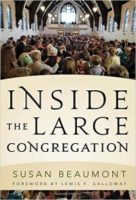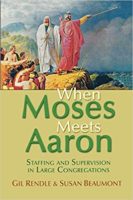
Core values are especially important when identity is shifting and resources are dwindling. At such times, when decisions must be made about what to say yes to and what to stop doing, core value statements are a critical discernment tool. However, core values won’t help you if they aren’t unique, mutually embraced, and authentic to the community, or if you don’t use them regularly.
Many congregations write a core value statement as part of a planning process along with a mission and vision statement, plaster them all on a wall someplace, and promptly forget them. Is a core values statement worth doing? Yes—but only if you create it well and use it effectively.
What Can Core Values Do for You?
Core values are the essential and enduring principles that answer the question, “What do we stand for?” Core values are a critical component of your congregation’s identity.
A core values statement does not describe the work you do—it explains why you do what you do. Your core values are not the strategies you employ to accomplish your mission; they are the principles that guide how you do everything you do.
A well written statement of core values can guide how you act, what you teach, whom you recruit, what behavior you reward, and how you allocate scarce resources. Core values help to distinguish right from wrong for your unique organization.
What’s the Difference Between any Value and a Core Value?
Every congregation lives by a variety of values, some of them conflicting. Certain of your most strongly shared values are so central to your identity that they constitute your core.
Your core values describe you when you are operating at your best. Your core values statement should incorporate an element of aspiration, but should be grounded in your reality. Your core values are not a wish list of who you would like to be in the future—they name your best attributes on your best days:
Every person matters. All of life is worship. Caring through community. Speaking truth to power. The centrality of prayer. Embracing others without judgment.
Of course, a label isn’t sufficient for defining a core value. You must also craft a brief description of what that label means to you. For example:
Every Person Matters. Each person is created in the image of God, entrusted with creative and spiritual gifts. We are each called upon to make a unique and humble contribution.
How many values can be part of your core? There are different opinions about this. Generally, when it comes to stating clear, concise, and unique values, less is more. Limiting yourself to four to five values will help you clarify what you really stand for and refrain from vague, meaningless generalities.
How To Write Core Values with a Group
To be useful, a core values statement must be rooted in the actual values of the congregation’s most influential members, stated in language they embrace as their own. One way to accomplish this is to gather your formal and informal leaders and ask them to reflect on the congregation’s values and select a vital few. Below is a Core Values Writing Process I have used to help leaders generate statements of core values.
Organizations often espouse values that they don’t enact. There’s no point in stating a core value that is merely aspirational. As a follow-up to the writing process, I recommend a Core Values Stress Test, whose plan is also shown below. At this gathering, leaders reflect together on the organization’s real values—the principles that guide it under stress—and how those values differ from those in their draft statement of core values. Leaders may decide to reaffirm their draft statement or to change it. Either way, they will understand that to follow it in times of stress will not always be easy.
How Do We Use Core Values?
The most consistent way to embody your core values is to intentionally include them in your meetings and your decision making. When you begin an important agenda item:
- Create an issue or problem statement. What is this issue about? What is it not about? What is the question we want to explore? What is not part of the conversation? Does a decision need to be made today?
- Name and clarify core values and grounding principles relevant to the discussion or decision item. Which values are most important, which are of lesser importance? What stakeholder values may conflict with the congregation’s core values on this issue?
- Shed Bias. Invite decision makers to prayerfully acknowledge and release any preconceived notions, biases, or ego-driven responses that don’t embrace the relevant core values.
- Then proceed with dialogue, weighing the options; voting, or deciding as appropriate.
We are living in confusing and anxious times. The decisions that your congregation makes right now are critical to thriving. Working more intentionally with a clear set of core values will help you discern an authentic way forward.
Susan Beaumont is a coach, educator, and consultant who has worked with hundreds of faith communities across the United States and Canada. Susan is known for working at the intersection of organizational health and spiritual vitality. She specializes in large church dynamics, staff team health, board development, and leadership during seasons of transition.
With both an M.B.A. and an M.Div., Susan blends business acumen with spiritual practice. She moves naturally between decision-making and discernment, connecting the soul of the leader with the soul of the institution. You can read more about her ministry at susanbeaumont.com.
Core Values Writing Process
Here is an exercise that I have found helpful. I have used it with groups of 12 to 150 people.
- Gather the influencers in your congregation. Give each person in the room a stack of five blank index cards. Provide the group with basic instruction about core values and give examples to consider.
- Invite each person in attendance to name five positive core values that this congregation has demonstrated over the past twelve months, writing one value on each of the five blank cards they have been given.
- Ask each person in the room to find a partner. Instruct them to choose someone that is most unlike them or someone they don’t know well.
- Through conversation, the pair must agree on five congregational values—from their original combined set of ten cards. They are free to write a new value that wasn’t previously considered, but they may not simply create broader categories to keep all the ideas on their original cards. They must choose—eliminating what is not core. Give the pair ten minutes for this task.
- Now, ask each pair in the room to remain together and find another pair to join them. Each foursome will begin again with ten cards. (Five cards from each pair that make up the new foursome.) Give each foursome fifteen minutes to move from ten cards to five cards, representing core values embraced by all four people.
- Collect the cards from the groups of four and sort the cards into categories. Four to seven values will likely emerge that can be embraced by the entire group.
Core Values Stress Test
Here is a follow up activity to use once you’ve named your core values. (Adapted from Preferred Futuring by Larry Lippitt).
- Explain that every congregation experiences times of great stress due to a transition or crisis. In times of stress, people behave in habitual ways, and these behavior patterns reveal what they truly value.
- As a full group, brainstorm a list of stressful times in the congregation over the past five years. These stressful times may be joyous or tragic, and have resulted in strong feelings, good or bad.
- Sort people into small groups of 4-6 people. From the list of stressful times, invite each group to choose one for reflection. Have someone in each group record responses to the following prompts:
- In times of stress, this tends to be our natural reaction: _______________________
- These are the real values such habits reveal: _______________________
- Now compare these real values to the values you identified as your core values. What similarities and differences become apparent? How might the values that surface in the congregation during times of stress help or hinder us as we pursue our mission?
- Come back together as a large group. Do we need to modify our core value statements considering this reflection—or can we modify our behaviors to better reflect our stated core values?



